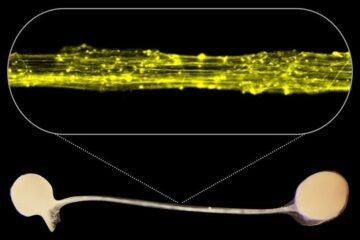New ultrasound-guided biopsy method allows improved diagnosis of endometrial disease

Physicians evaluated the endometrium, a cavity that lines the inside of the uterus, in women who were in the midst of or had gone through menopause and who complained of abnormal bleeding. Abnormal bleeding can indicate certain diseases of the endometrium that may or may not be malignant.
The current standard of care is to blindly biopsy the endometrium; however, the biopsy might not always sample the part of the cavity that is diseased.
A study available online and in the April issue of Obstetrics and Gynecology shows that using saline-infusion sonography (SIS), or ultrasound, a minimally invasive procedure, allows doctors to actually see where in the endometrium a polyp or growth exists and to biopsy it accordingly.
“Saline infusion sonography augments the usual transvaginal sonogram and lets us see what is inside the endometrium,” said Dr. Elysia Moschos, associate professor of obstetrics and gynecology at UT Southwestern and the lead author of the study. “Normally, the endometrial cavity is collapsed, but when we infuse it with saline, we can visualize inside the cavity and see if it contains any abnormalities.”
On a sonogram, water appears dark and tissue is light, so polyps or tumors look bright in comparison with the surrounding saline solution. Using the SIS procedure, physicians inject saline through a catheter threaded into the uterus through the cervix to fill up and expand the endometrial cavity.
Doctors can then easily visualize and biopsy an existing growth under sono guidance and send it to a pathologist for analysis.
A total of 88 saline-infusion sonography endometrial samples were obtained. In the final outcome of 80 of those samples, saline-infusion endometrial sampling provided a diagnosis 89 percent of the time, compared with 52 percent for endometrial biopsy.
The study showed there were no women for whom blind biopsy of the endometrium would still be an appropriate first step, Dr. Moschos said. The blind biopsies missed 15 of 16 benign polyps and one-third of cancers.
By comparison, two-thirds of benign polyps were correctly diagnosed by saline-infusion sonography endometrial sampling and no premalignant or malignant growths were missed.
Abnormal bleeding is a common complaint among patients, particularly during and after menopause. Women experiencing this symptom need to be evaluated for any kind of gynecologic cancers, Dr. Moschos said. The first step should be imaging of the endometrium by ultrasound.
According to the American College of Obstetrics and Gynecology, postmenopausal women who have an endometrial lining thicker than 4 millimeters need further follow-up.
“In women with abnormal endometrial appearances, SIS should then be performed. If the endometrium is uniformly thickened on the SIS exam, only then is a blind biopsy appropriate,” Dr. Moschos said. “However, most endometrial pathology is focal, and therefore directed sampling, such as with saline infusion sonography guidance, is necessary.”
The patients were all evaluated at Parkland Health and Hospital System in Dallas, the primary teaching hospital for UT Southwestern faculty physicians.
Other UT Southwestern authors included Dr. Raheela Ashfaq, professor of pathology and obstetrics and gynecology; Dr. Donald McIntire, professor of obstetrics and gynecology; and Dr. Diane Twickler, professor of radiology and obstetrics and gynecology.
The study was funded by a grant through the American Cancer Society.
Visit www.utsouthwestern.org/obgyn for more information about our clinical services in obstetrics and gynecology.
Media Contact
More Information:
http://www.utsouthwestern.eduAll latest news from the category: Medical Engineering
The development of medical equipment, products and technical procedures is characterized by high research and development costs in a variety of fields related to the study of human medicine.
innovations-report provides informative and stimulating reports and articles on topics ranging from imaging processes, cell and tissue techniques, optical techniques, implants, orthopedic aids, clinical and medical office equipment, dialysis systems and x-ray/radiation monitoring devices to endoscopy, ultrasound, surgical techniques, and dental materials.
Newest articles

Caution, hot surface!
An international research team from the University of Jena and the Helmholtz Institute Jena are demystifying the mechanisms by which high-intensity laser pulses produce plasma on the surface of solids….

Exploring the Asteroid Apophis With Small Satellites
In five years’ time, a large asteroid will fly very close to Earth – a unique opportunity to study it. Concepts for a national German small satellite mission are being…

First model of the brain’s information highways developed
Our human brain is not only bigger and contains more neurons than the brains of other species, but it is also connected in a special pattern: Thick bundles of neurons…





















